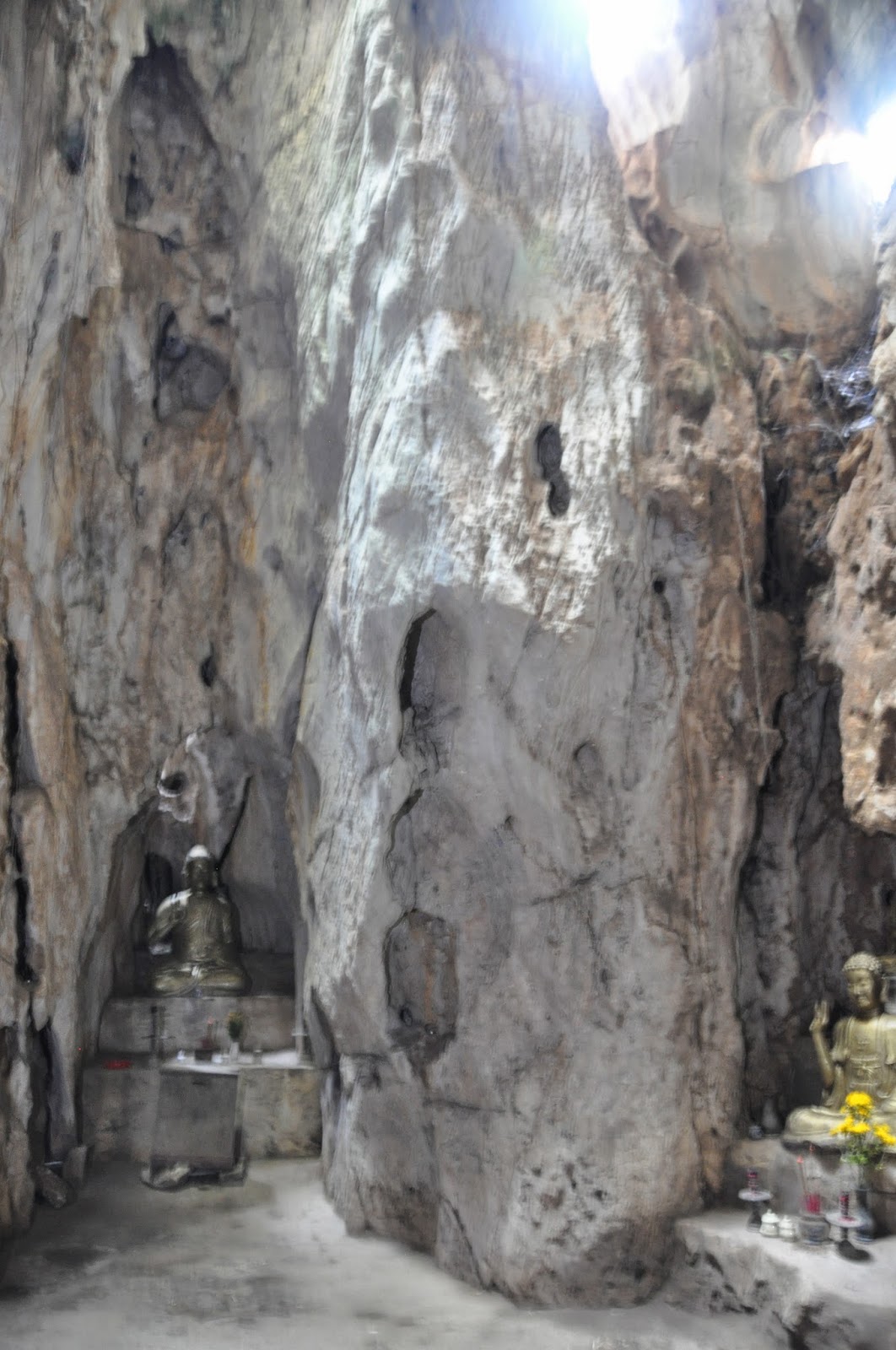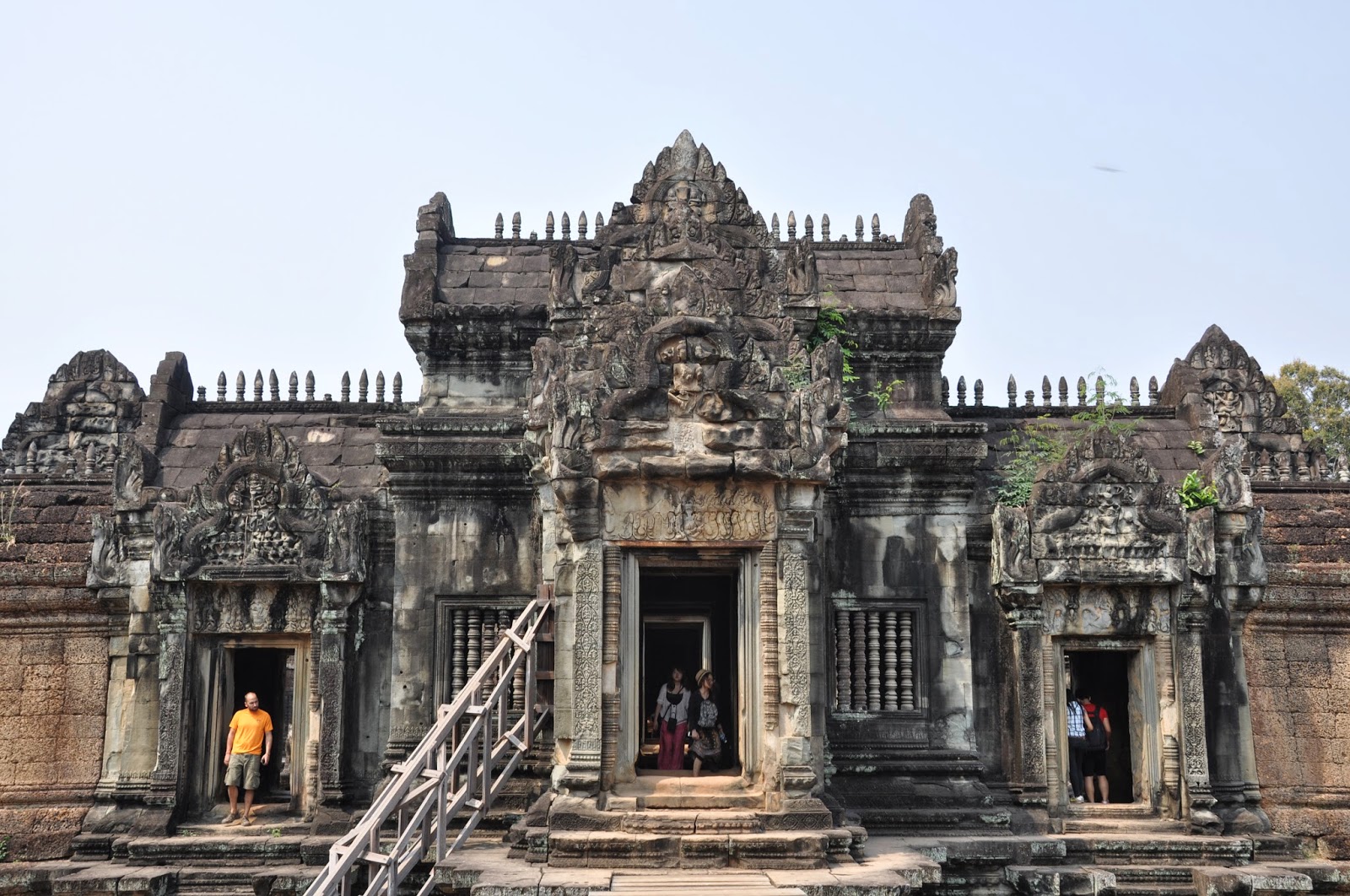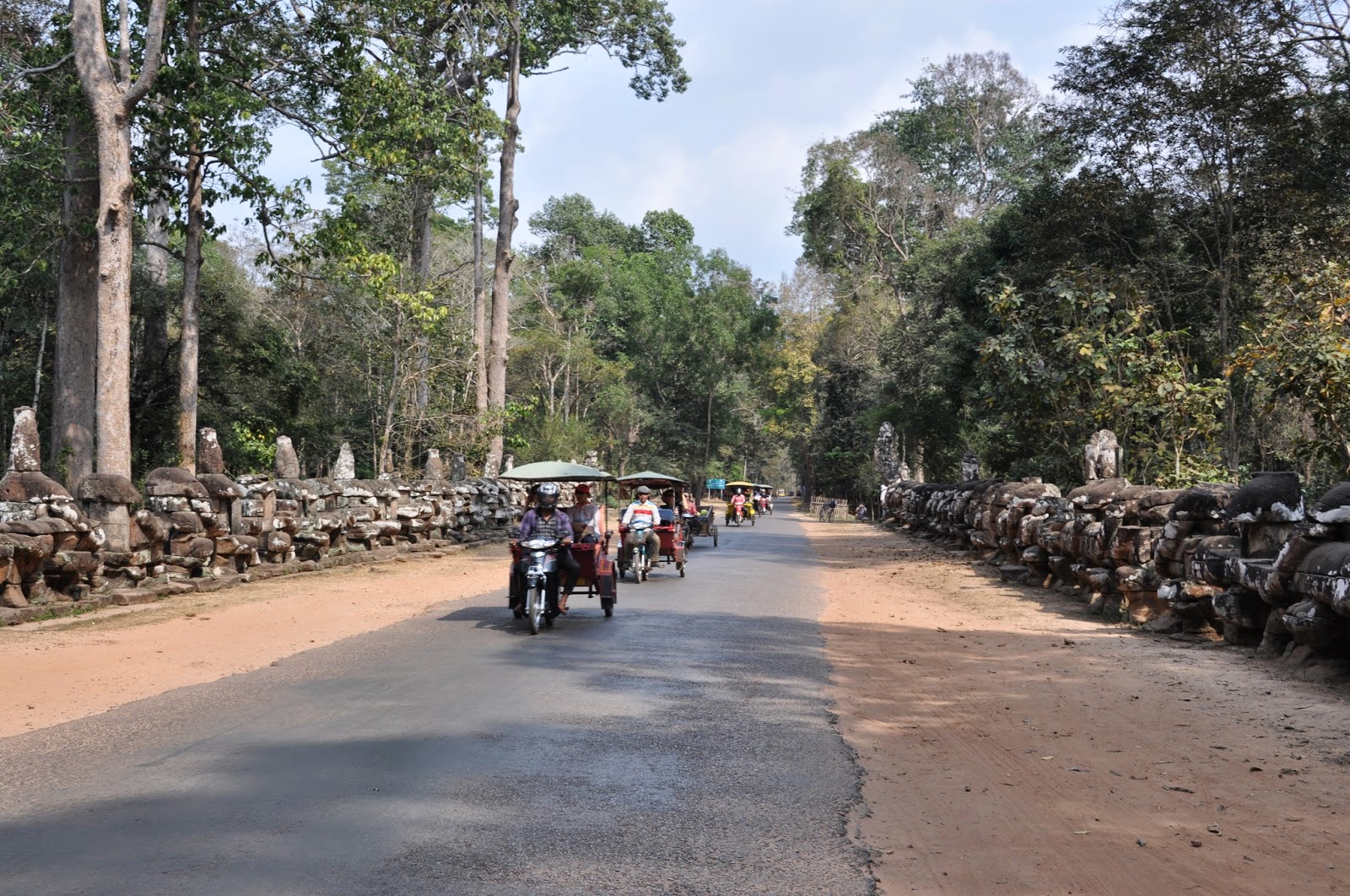Thursday, 21 August 2014
The Mekong Delta
The last stretch of our north-south Vietnamese journey brought us to Ho Chi Minh City and a day trip to the Mekong Delta, specifically to My Tho in the district of Ben Tre. This is a lush tropical area with acres upon acres of banana and coconut plantations and of course abundant fisheries in the river delta. We had a great day cruising up the river on a small boat - an eye-opening experience watching the commercial transportation up and down stream, visiting a brick factory and a coconut plantation and finally having lunch in a well-disguised restaurant in the midst of the tropical forest.
 |
| Fish farms on the river |
 |
| Small boat cruising upstream |
 |
| Residential boats on the riverbank |
 |
| Fixing the traps seem to keep everyone busy |
 |
 |
| Junks carrying bamboo, vegetables, among other things |
 |
| A fishing boat |
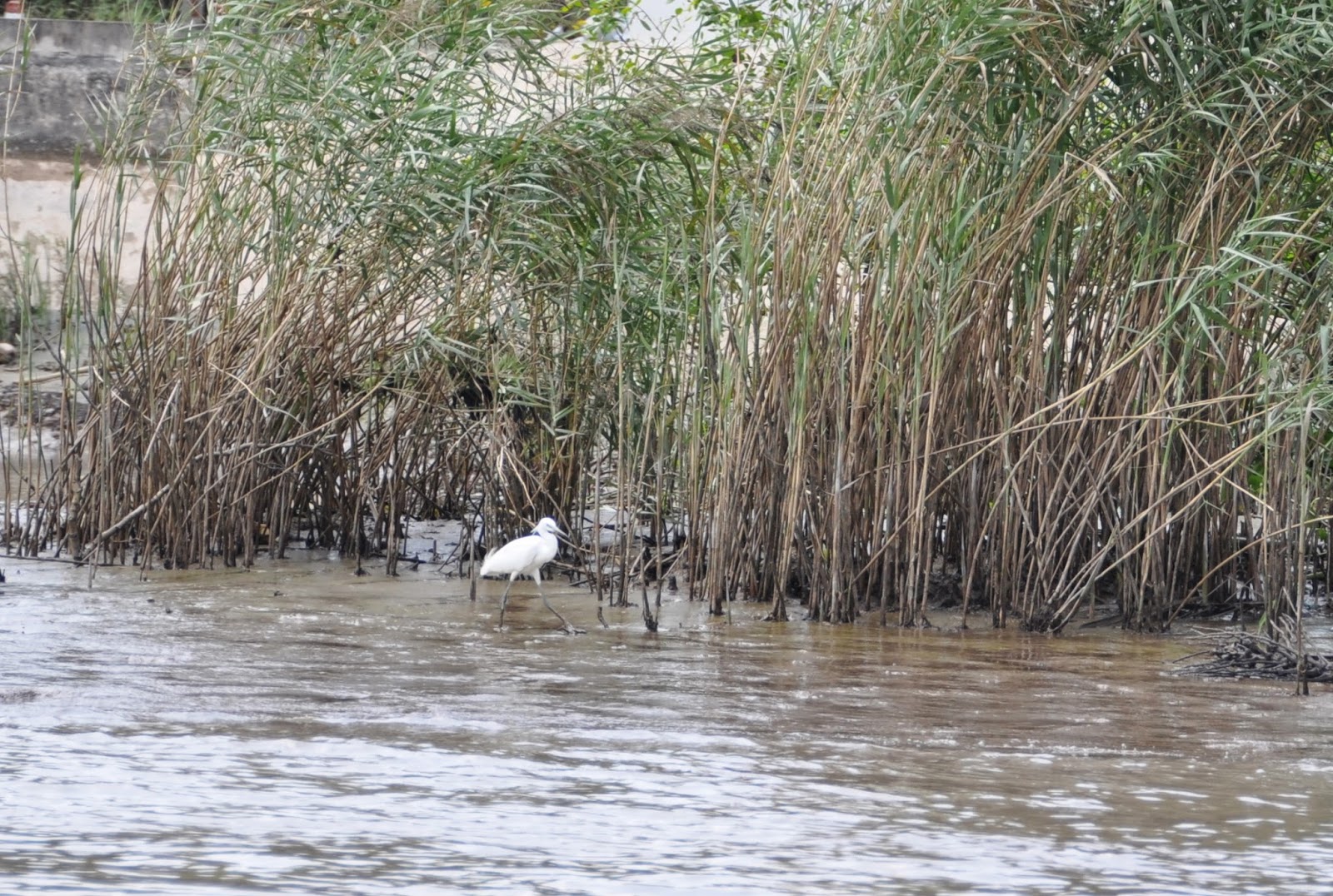 |
| A heron out for a stroll... |
 |
| Young man and his wicker baskets (possibly used for traps) |
 |
| Bricks galore! |
 |
| Giant kiln in brick factory |
 |
| looking up the chimney inside the kiln |
 |
| Kiln entrance with niche for incense for the gods |
 |
| Bricks sticking out are used as steps for workers to climb up to the top of the kiln |
 |
| Kiln entrance showing ash left behind when the bricks were finished firing. This entrance would have been completed sealed when the fire was on. |
 |
| Classic Vietnamese stilt house |
 |
| Coconut farm |
 |
| A sharp blade is used to open up the coconut - all done manually |
 |
Coconut baby |
 |
| Coconut candy |
 |
| Snake wine! Don't know what's the correlation between snakes and coconut, but this was at the shop in the coconut farm |
 |
| Boat with coconut cargo - workers taking a break on their hammocks |
 |
| Another coconut cargo - this was included here just because I like the backdrop |
 |
| Logging |
 |
| Going up a tributary to lunch, read about the unique dish we had on Foodsparks |
Wednesday, 11 June 2014
Hoi An Streetscape
My enduring memories of Hoi An is of a very colourful yet serene and peaceful place. There were no crowds to push past or traffic that threatened your life. It seemed a very laid back place compared to Hanoi and Ho Chi Minh City. No wonder people are looking at retiring here - fresh air, fresh food, friendly people - what's not to like about it. And lots of good places to eat as we found out on our Hoi An Food Tour (blog post coming up).
 |
Pre-wedding photo sessions were very popular on the streets of Hoi An |
 |
| Wide avenues outside of the Old Town |
 |
| The river is an important thoroughfare |
 |
| Bike Ferry |
 |
| Enjoying the social life |
 |
| Huge market |
 |
Choice of fresh-made noodles - hand-made on the premises! |
 |
| Gigantic goose eggs |
 |
| Fresh fish from the sea |
 |
| Lanterns, lanterns, and more lanterns... |
 |
| Hand-made on the premises! |
 |
| Imitation food - looks delicious! |
 |
| Real food - made in an artisanal shop in a back alley |
 |
| Potato Pancakes drying in the sun |
 |
Age is no barrier - both these ladies were over a hundred years old and still going strong! |
 |
| Birds galore! People have time to listen to the birds! |
 |
| Shutting down for the night - the old-fashioned way... |
Thursday, 5 June 2014
Ancient town of Hoi An
Our journey south along the coast of Vietnam took us to Hoi An, or "peaceful meeting place". This used to be a busy harbour town, an important trading centre in the 16th and 17th centuries where the Chinese, Japanese, Dutch and Indians settled. We were surprised at the elaborate community meeting halls bearing the names of different Chinese provinces. One of the main attractions in town was the unique covered Japanese bridge - the Japanese settlement used to be on the other side of this bridge.
When the French came to Indochina, DaNang took over as the centre of trade and Hoi An became a forgotten backwater, which was a good thing because it meant that it was left out of all the subsequent political activities, including the war. As a result, its ancient town remained unchanged and was preserved. It is now a UNESCO heritage site.
I found Hoi An charming, especially the traditional architecture in the old town spread over three main streets with many intricate alleys and historical houses in between. Take a look for yourself...
When the French came to Indochina, DaNang took over as the centre of trade and Hoi An became a forgotten backwater, which was a good thing because it meant that it was left out of all the subsequent political activities, including the war. As a result, its ancient town remained unchanged and was preserved. It is now a UNESCO heritage site.
I found Hoi An charming, especially the traditional architecture in the old town spread over three main streets with many intricate alleys and historical houses in between. Take a look for yourself...
 |
| The delightful Japanese covered bridge - make no mistake, it's usually plastered with tourists. I just lucked out with this one. |
 |
| The Fukien Community Hall - built by traders from Fukien Province in China when they landed in Hoi An. There was another one built by traders from Guangdong Province. |
 |
| Gorgeous cherry blossoms in the community centre |
 |
The central piece in the community compound is a temple - the centre of worship was also the centre of the community. The temple roofs and eaves were elaborately decorated. |
 |
| The temple was dedicated to the Goddess of the Sea, naturally |
 |
| Clearly a demon god! |
 |
| All the community halls seem to have dragon fountains! |
 |
| Incense swirls that could burn for a long time - the name of the worshipper was written on a tag in the middle |
 |
| Rooftop figurines arranged in correct protocol - female on the right |
 |
| Male on the left |
 |
| One of the three ancient streets in the old town - most of the buildings were still in tact but had been turned into a variety of shops and restaurants. Note the different styles of balconies. |
 |
| Some buildings were in the colonial style |
 |
| An old house turned into a unique book store |
 |
| Interesting double roofs |
 |
| This was an old family home opened for tourist visits |
 |
| The internal courtyard was an important source of light |
 |
| Entrance to a community house |
 |
| One of many alleys in the old town. We wandered down several of these and found some interesting old courtyards and artisanal shops. |
 |
| This was a clan hall for the Zhang clan |
 |
| An ancient courtyard off an old alley made for a lovely backdrop for this working woman! |
 |
| The theatre |
 |
| A museum |
 |
Along the river front |
 |
| Hoi An at night - lit by a thousand lanterns... |
Sunday, 1 June 2014
The scenic road from Hue to Hoi An
The road from Hue to Hoi An passed through some spectacular scenery over a few hours in rural and coastal central Vietnam - well worth the drive up the mountains going through the famous Hai Van Pass. The drive also took us through the city of Da Nang and a fascinating site called Marble Mountain, a cluster of five marble and limestone hills named after the five elements (metal, wood, water, fire, earth). There were many caves in the mountains that were used as Buddhist shrines with temples built into the mountain side. During the Vietnam war, it was a Viet Cong guerilla haven - the Viet Cong used a huge cave in the mountain as a hospital and was able to escape detection even though it was less than 10 km from the military base in Da Nang. It was a steep hike up the mountains followed by winding paths and it was hard to imagine how the wounded were transported up to these caves.
 |
| The view of the gorgeous beach in Lang Co from the mountain road. Lang Co is being developed into a beach resort. |
 |
| Herd of mountain goats crossing the road |
 |
| View from the Hai Van Pass - would have been spectacular if not for the haze |
 |
| Modern city of Da Nang viewed from the bridge |
 |
| Beach front in Da Nang |
 |
| Stunning Dragon Bridge in Da Nang |
 |
| Steep steps up to Marble Mountain shrines |
 |
Buddhist temple near the top |
 |
| Old bell inside the temple |
 |
There were quite a few caves in the mountains with ancient shrines and temples. |
 |
| Pagoda on Marble Mountain |
 |
| Vietnamese mother in national costume posing with her children on the steps of the pagoda |
 |
| This map gives an idea of the system of caves - the largest cave at the end, Huyen Khong Cave was the one used as a hospital during the war. |
 |
Entrance to the cave |
 |
Huyen Khong Cave |
 |
| A natural skylight in the cave ceiling brought sunlight into the cave at certain times |
 |
| At the foot of the mountain, the village Dong Hai is famous for its stone sculpting craft shops. Statues made here are exported to all parts of the world - and obviously non-denominational. |
Wednesday, 28 May 2014
Hue Streetscape
While Hue was calmer than Hanoi, its streetscape was just as colourful. Motorcycles were still the dominant vehicle but we felt safe crossing the streets. We went on a walking tour of the town and came across many food stalls that were very similar to the ones in Hanoi but their food often had a Hue twist. Hue is situated right beside the water so shrimp is easily available - just about everything we ate had shrimp in it. We ate a meal at a family-run restaurant with only five items on the menu. Read about our Hue food experience on Foodsparks.
 |
| Interesting mix - produce sold on curbside and housewares and clothing in the stores inside with what looked like different owners. |
 |
| Exotic cow penises to order on a street stall - supposedly good for the same part of the human male |
 |
| The dessert counter! |
 |
| This is an antique street stall more than a century old and still in use! |
 |
| A "modern" street stall |
 |
Snails galore |
 |
| I forgot to ask why the rolled dough was left on the cylinders |
 |
| Lineup of dragon boats for tourists to cruise the Perfume River |
 |
| The historic Hotel Saigon Morin from the turn of the century (1901) |
 |
| Rush hour on the Truong Tien bridge (another one built by Eiffel in 1899) - but look at the little kid clutching on for life! |
 |
| It's an easy walk across the bridge to the market, except when you have a load on your shoulders |
 |
| At the market - I like how neatly the lettuce was arranged |
 |
| and the different fish portions |
 |
| This is the place for bananas - they were very sweet |
 |
| Random orchid on roadside tree |
 |
| The Vietnamese seems to like travelling in their national costume |
 |
| Colourful Vietnamese outfits for different ages |
Wednesday, 28 May 2014
Imperial City Hue
Just an hour by plane south of Hanoi, Hue seemed peaceful, quiet and organized after the bustle and havoc that was Hanoi. Hue is famous as the home of the Vietnamese Imperial City from the time of the Emperor Gia Long, built in the early 1800's, modelled on the Forbidden CIty of China and even bore a similar name. Many of the buildings were destroyed during the Tet offensive in the Vietnam War but a number are being restored.
Looking at the historical structures made us realize the close ties that Vietnam had with China, including the use of a modified set of Chinese characters in its written language, likely the result of it being under Chinese rule for a thousand years. We were surprised that we could read everything that was written on the historical monuments, including the stelae identifying the national scholars, who had to go through a system of exams very similar to the ones in imperial China. And of course, many of the symbolism used in the food and culture had Chinese origins.
I am writing this during an unsettling time in Vietnam when centuries old animosities towards the Chinese were bubbling to the top. I am relieved that we visited Vietnam when we did, before the attacks on the Chinese took place but saddened by the situation - it would have been so much more productive otherwise.
 |
| Thien Mu Pagoda built in 1601 dedicated to the "Celestial Mother" |
 |
| Bronze bell cast in 1710 weighing over 3000 kg could be heard 10 km away |
 |
| Lovely lily pond on the grounds |
 |
| Burial stupa in the garden of pine trees |
 |
The temple had extensive patronage from the dynastic rulers |
 |
| The Citadel of the Imperial CIty, surrounded by a wall and moat |
 |
| The Noon Gate under restoration - one of ten gates into the Citadel, it was also the one where important announcements were made |
 |
| A side gate to the Hiem Lam Pavillion and the Temple Hung Mieu |
 |
| Temple Hung Mieu built in honour of the parents of the emperor. |
 |
| Hien Lam Pavillion, across from the temple, built in 1824 in honour of all those had contributed to the Nguyen Dynasty. There are nine bronze dynastic urns in front of the Pavillion, each dedicated to an emperor, symbolizing his qualities. |
 |
| The ornate entrance gate to the Hiem Lam Pavillion |
 |
| Inside the Hiem Lam Pavillion |
 |
Long corridors of lacquered wood displayed achievements of centuries of academic awards based on an old Chinese system |
 |
| The gate to the Khai Dinh Tomb |
 |
A second set of steps to climb before what appeared to be the mausoleum but which in fact was not |
 |
| Stele monument |
 |
| Stone bodyguards |
 |
| Carved dragons on pillars |
 |
| Khai Tanh Palace - where the actual grave of the emperor was located |
 |
Chinese porcelain decorations inside the palace with Japanese bottled glass trims |
 |
 |
| Statue of Emperor Khai Dinh cast in Marseilles |
 |
| Roof decoration |
Thursday, 15 May 2014
Enchanting Halong Bay
Halong Bay, about 4 hours east of Hanoi, was the high point of our 6 week trip in terms of scenery. It's the kind of scenery that always made me wish I could paint as it was so hard to capture the essence on camera. It was foggy and hazy when we arrived in the early afternoon, after a bumpy ride on a highway under construction. I was worried that it would stay that way, making it almost impossible to take a good picture as even the foreground was barely visible. We were lucky that by mid-afternoon, the sun broke through and there was a combination of light and haze that allowed us to take some decent shots. It lasted a few hours and that was it for the rest of our cruise, including the following morning. While it was magical to watch the rock formations through the fog, we were glad we got our pictures in that window of a few hours. You could see the results below. The first photo was taken when we first arrive, it was impossible to capture both foreground and background in the haze. Interesting as the fishing boat was, one couldn't place it in Halong Bay without capturing the background.
The haze slowly lifting...
In the morning, it was like a Chinese brush painting...
The haze slowly lifting...
 |
| These two rocks look like cocks fighting |
 |
| Small fishing boat with nets and floating markers |
 |
| A small floating fishing village |
 |
| A small temple built into the rock face across from the fishing village |
 |
| Eagle like rock formation as we approached the limestone cavern |
 |
| There was a moment of sun before we entered the cavern, by the time we came out, it was gone. This was a view from the cave exit. |
 |
The walls and ceiling of the limestone cavern were quite spectacular |
 |
| The people on the path provide an indication of the huge size of this cavern |
 |
| A floating shop just outside the cave |
 |
The many caves in the area are great for kayaking |
 |
| Fishing boat on its way home |
 |
We cruised around the bay and then anchored in a sheltered cove together with other cruise boats for the night. |
3 comments:
-
-
Gorgeous pictures! Does Halong mean Black Dragon in Chinese? I've been fascinated by it since I saw Indochine 20 years ago (ok so it wasn't that great of a movie!)ReplyDelete
-
Thanks, HG. I had thought the same for many years because there is a place with a similar name in China (HeilungJiang) which means Black Dragon. Here it actually means the way it sounds Halong is Descending Dragon. http://en.wikipedia.org/wiki/H%E1%BA%A1_Long_BayReplyDelete
Wednesday, 14 May 2014
Hanoi Architecture - also unique
One of our tour companions is a well-travelled architect. He remarked that he had never seen any place like Hanoi in terms of architecture. According to our tour guide, the houses all had narrow frontage due to a law that limited lot sizes. Even if the owner had money, he could only build up, resulting in tall, narrow buildings. If his neighbour did not have enough money to build on his entire lot, the rich owner could ask him to sell some footage so he could build a wider house - this was evident in our drive through town and on our way to Halong Bay.
This shot from the rooftop of our hotel captured the mishmash of buildings that made up Hanoi.
The restoration of traditional houses here was a joint project with the French government - definitely worthwhile aid to preserve at least parts of the historic quarter in Hanoi for future generations.
This shot from the rooftop of our hotel captured the mishmash of buildings that made up Hanoi.
 |
| A renovated shop beside what looked like a row of French colonial style houses that are wider than normal, probably built before the establishment of standard lot sizes. |
 |
| This is an original 17th century house in the old quarter |
 |
| The pink house here had likely added footage from its neighbour |
 |
| The house on the left is standard size, the yellow one in the middle had clearly bought some frontage from the house on the right that seemed to be narrower than the standard sized house on the left. |
 |
| Another example - the two houses in the middle had clearly bought from neighbours on either side. |
 |
| This shows two houses sharing an entrance corridor |
 |
| Would you call this a green roof?? or a house with a plant-loving owner... |
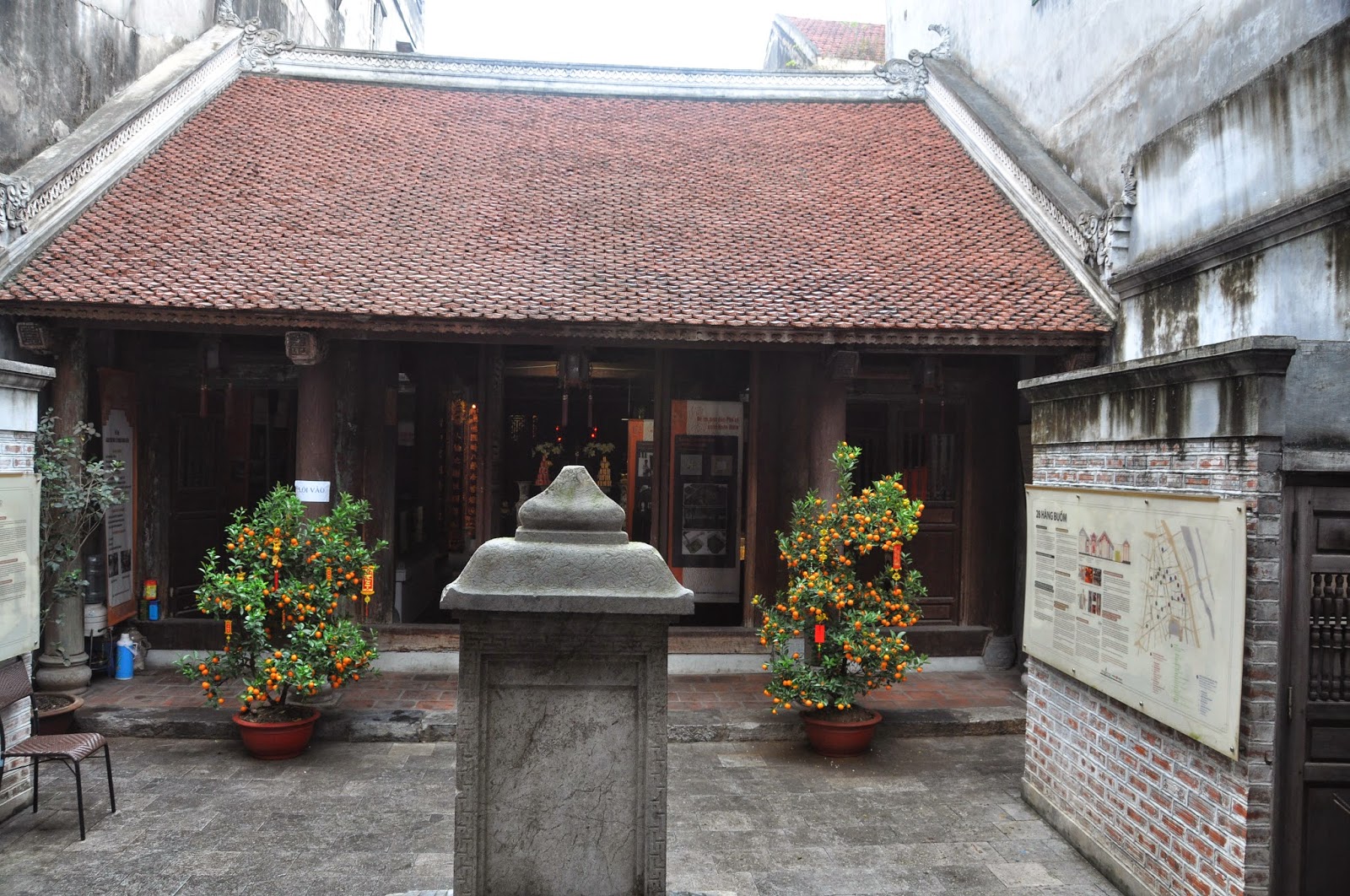 |
| In complete contrast is this traditional community hall from the 17th century - there are community halls in every neighbourhood. This one has some elaborate wall carvings in the internal courtyard. |
 |
| Communal hall sitting area |
 |
| A restored traditional house on Mah May Street |
 |
| An internal courtyard was typical of traditional houses - it really brightened the living area |
 |
| Second floor of traditional house |
Sunday, 11 May 2014
Fascinating Hanoi Streetscape
Hanoi had some of the most fascinating streetscapes I've encountered, in fact, the street scene was far more interesting than any of the tourist sights we visited. The streets were very busy and the traffic horrific, in fact, dangerous to negotiate. We were constantly surprised by the seeming lack of accidents on the road given how chaotic the traffic was. When the light turned green for the pedestrian, it didn't mean that you could cross without being run over. You still have to watch for traffic coming and it was never obvious which direction they would be approaching - that was the scary part.
We ventured out on our own nevertheless and even to the edge of the old quarter where there were multilane traffic going in different directions. We were relieved and proud that we survived! Out tour guide did a practise run with us the day before - we followed him closely and he was like our shield against oncoming traffic. But we also figured out the technique - the key was to keep going and never retreat. The motorcyclists were so skilled they had learned to estimate where you would be when they saw you crossing in front of them they were almost always able to drive around you. On the other hand, if you hesitated and stepped back, you would truly be in danger of being run over because it was an unexpected movement. I wasn't able to get any pictures of our crossing the street, for obvious reasons. I literally had my heart in my mouth when I stepped off the pavement for the first time. But once we're on the road, we just need to keep walking, slowly, with our eyes on the oncoming traffic but remaining calm, and the traffic would miraculously drive around us. By the end of our stay in Hanoi, we were acting like old pros on the streets - the traffic in Hue and Hoi An were nothing in comparison and even in Ho Chi Minh City, the traffic rules were much clearer and you know you could safely cross as long as there was a traffic light. They should be selling T-shirts in Hanoi with "We Survived Hanoi traffic!"
We ventured out on our own nevertheless and even to the edge of the old quarter where there were multilane traffic going in different directions. We were relieved and proud that we survived! Out tour guide did a practise run with us the day before - we followed him closely and he was like our shield against oncoming traffic. But we also figured out the technique - the key was to keep going and never retreat. The motorcyclists were so skilled they had learned to estimate where you would be when they saw you crossing in front of them they were almost always able to drive around you. On the other hand, if you hesitated and stepped back, you would truly be in danger of being run over because it was an unexpected movement. I wasn't able to get any pictures of our crossing the street, for obvious reasons. I literally had my heart in my mouth when I stepped off the pavement for the first time. But once we're on the road, we just need to keep walking, slowly, with our eyes on the oncoming traffic but remaining calm, and the traffic would miraculously drive around us. By the end of our stay in Hanoi, we were acting like old pros on the streets - the traffic in Hue and Hoi An were nothing in comparison and even in Ho Chi Minh City, the traffic rules were much clearer and you know you could safely cross as long as there was a traffic light. They should be selling T-shirts in Hanoi with "We Survived Hanoi traffic!"
 |
| Street hawker selling Vietnamese baguette |
 |
| Two hawkers selling disparate things sitting side by side. One was obviously selling to tourists, the other - street food for locals. |
 |
| Here are hawkers that could easily move around with their goods. |
 |
| Lottery tickets sold on the street |
 |
| Chess - as it's played everywhere else, on the street, by older local men. These are Chinese chess pieces where the character of the piece is written in Chinese. |
 |
| Locals having dinner on street corner food stands. It seems that the Vietnamese ate out a lot, even for breakfast! |
 |
| This was breakfast |
Historically, a lot of the streets in the old quarter were dedicated to selling specialty goods and many of the streets were named after the goods sold with many just selling one type of product. Now there are still remnants of these streets in evidence although the number of stores selling the goods were much diminished.
 |
Bamboo used to be sold in all the stores on this street - now only on half the street |
 |
| Another street with stores selling herbal medicine |
 |
| A street selling rice and grains - unbelievable varieties! |
 |
| This street sold household goods |
 |
| A specialty shop selling art supplies |
 |
| An amazing dried fruit store - each bowl decorated by a fruit creature |
 |
| A dried goods store but it also sells fresh bamboo! See the dried squid on the wall. |
 |
| A size for every head! |
 |
| Look carefully at this photo - note the train running right in front of these houses - imagine living right beside the tracks! |
 |
| Like the humans - right at home on a bike! |
 |
| The convoy of tourist tuk tuks heading for the night market |
Wednesday, 7 May 2014
Hanoi Sights
In the few days that we spent in Hanoi, we were surprised by the relative paucity of historical monuments in this capital city and the second largest city in Vietnam. The old quarter streetscape trumped the few significant buildings on our tour list. Granted we did not venture far outside the old quarter but there were not a lot to entice us into the so called French quarter other than the Opera House and a couple of museums. Designer stores were in abundance but not a destination for us.
Below are some of the key sights we visited - this is afterall a communist country and I suspect these are obligatory items on every tour company's list.
Below are some of the key sights we visited - this is afterall a communist country and I suspect these are obligatory items on every tour company's list.
 |
| Ho Chi Minh Mausoleum - housing the body of the former leader of this communist country (1941 to 1969) |
 |
| The official presidential palace itself is off limits |
 |
The beautiful carp pond in the palace garden |
 |
| This is is the "stilt" house on the palace grounds where Ho Chi Minh supposedly lived in the last ten years of his life. It was built like the traditional Vietnamese stilt house and Ho met with his comrades in the lower deck seen here. |
 |
| The One Pillar Pagoda, originally from the 11th century, destroyed by the French in 1954 and rebuilt afterwards. It is designed to represent a lotus blossom standing in a pond. |
 |
| The floral display outside the Temple of Literature |
 |
| The entrance to the Temple of Literature, essentially a temple dedicated to Confucius - the layout was based on the original temple in Qufu, Shandong, Confucius' birthplace. |
 |
| Constellation of Literature pavillion |
 |
| The main temple |
 |
| Huge bonsai on temple grounds |
 |
| Statue of Confucius |
 |
| Rows of stellae of carved blue stone turtles carried the names and birthplaces of the graduates of the 82 triennial exams |
 |
| We were taken to the Maison Centrale (Hoa Lo Prison), also known as the "Hanoi Hilton", in reality a prison where the French held their political prisoners and where later, the North Vietnamese held American prisoners of war. |
 |
| Glass on the wall |
 |
Wall sculptures depicting prisoners from colonial times and during the Vietnam war |
 |
| A guillotine used in the prison |
 |
| Opera House in the French Quarter |
 |
| War memorial |
 |
Old Hang Dau water tower - the oldest French structure in Hanoi - it's very close to the bridge (below) built by Eiffel of Eiffel Tower fame |
 |
Water Puppet Theatre with live music accompaniment |
 |
 |
Lively traditional Vietnamese water puppet theatre and puppet crew |
Next post: Hanoi Streetscapes























